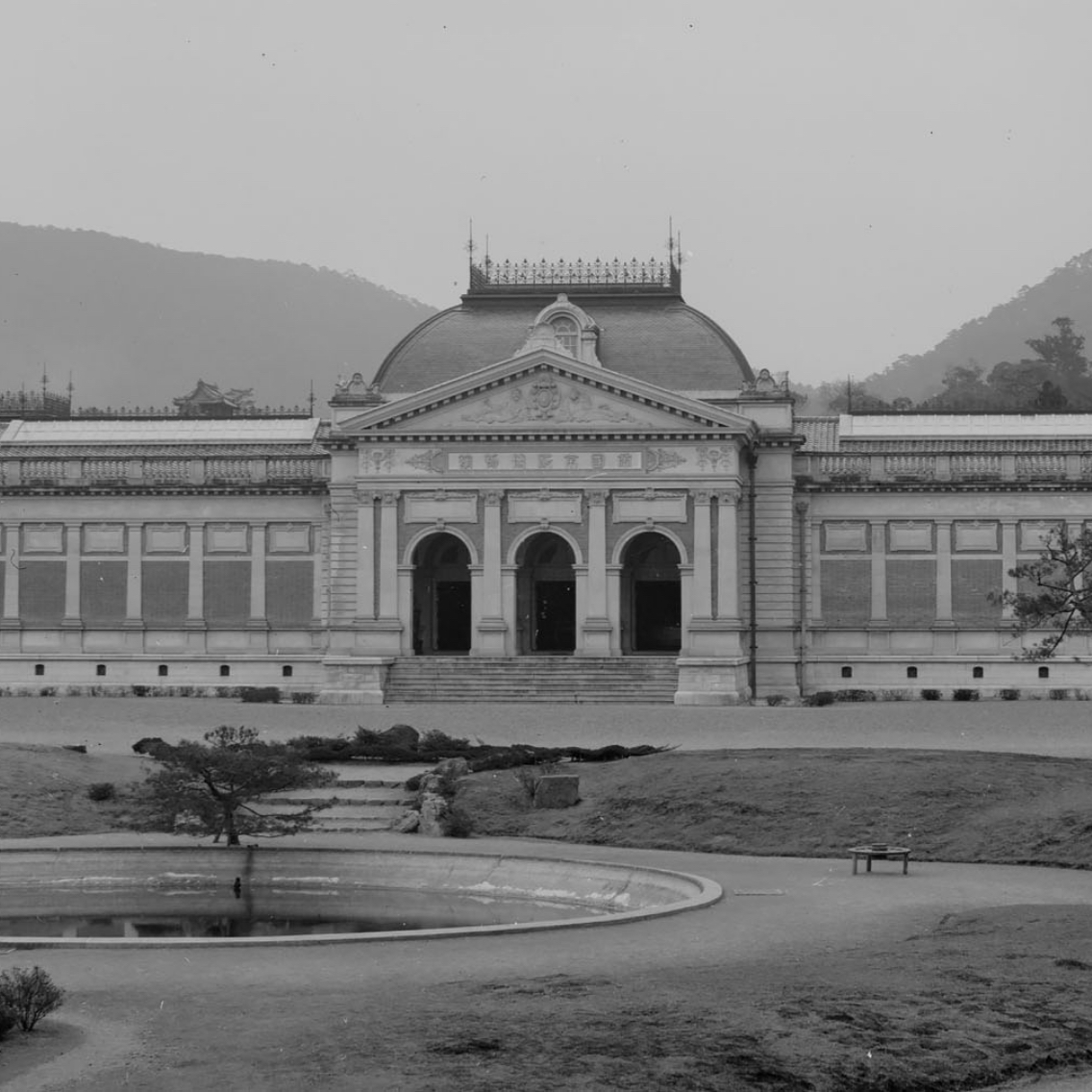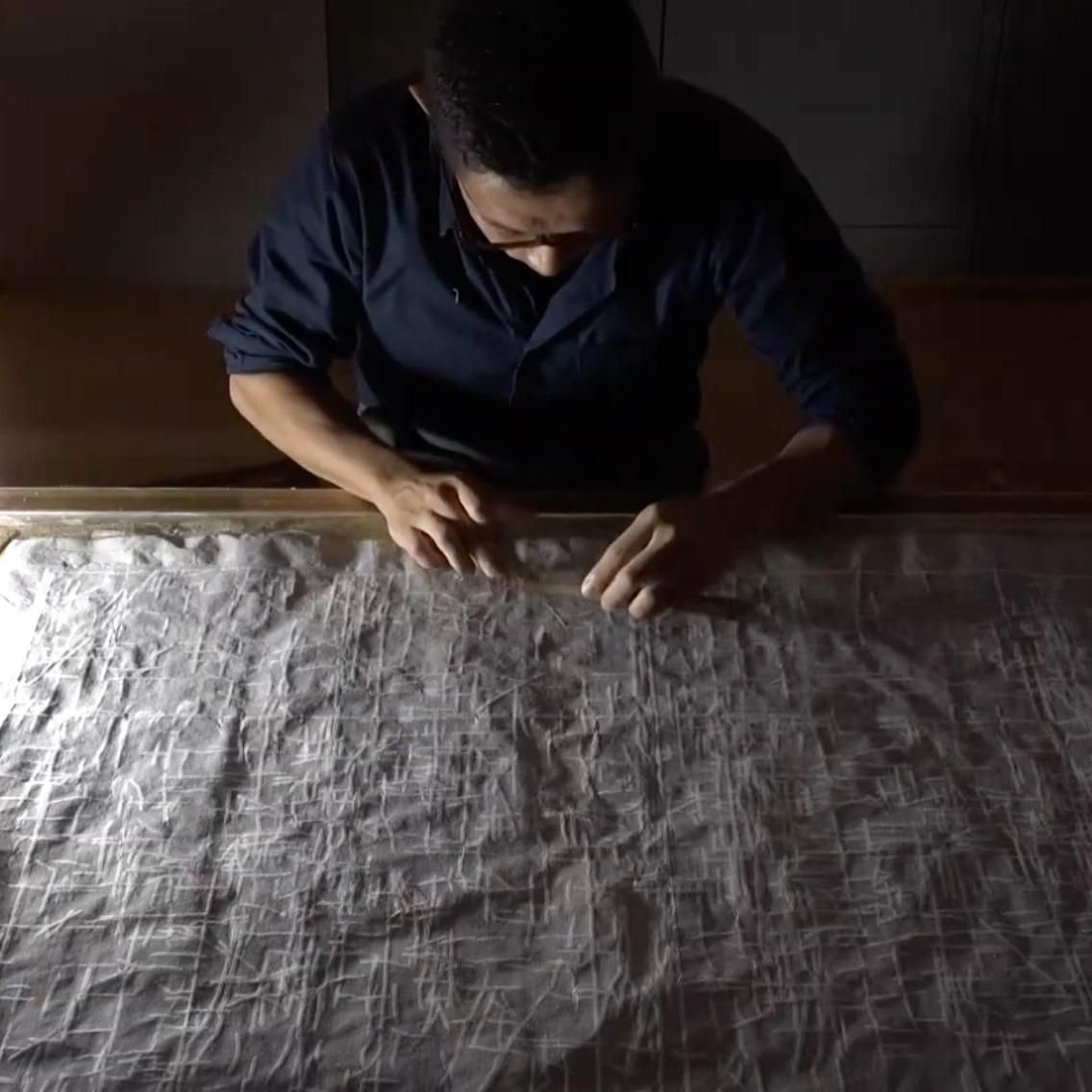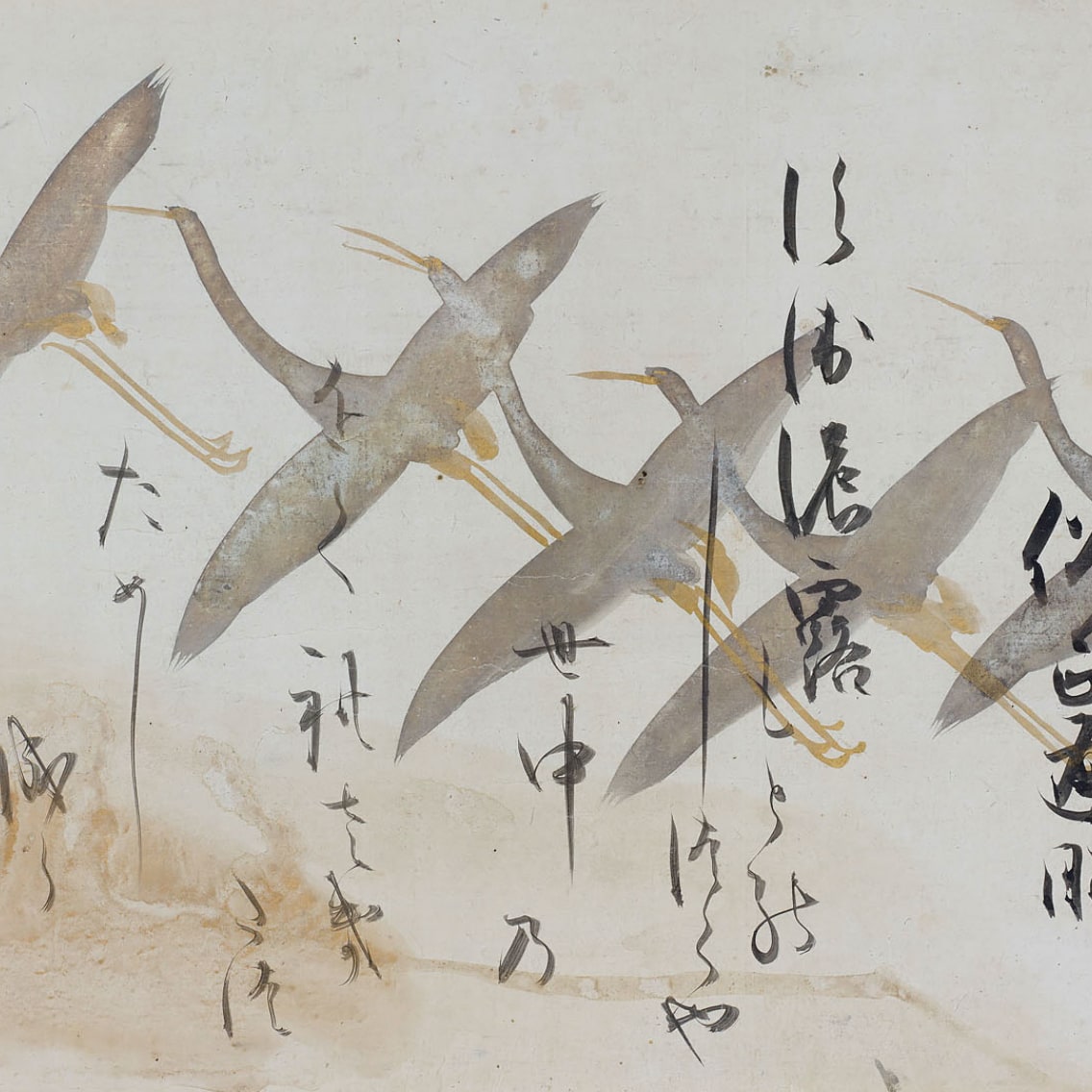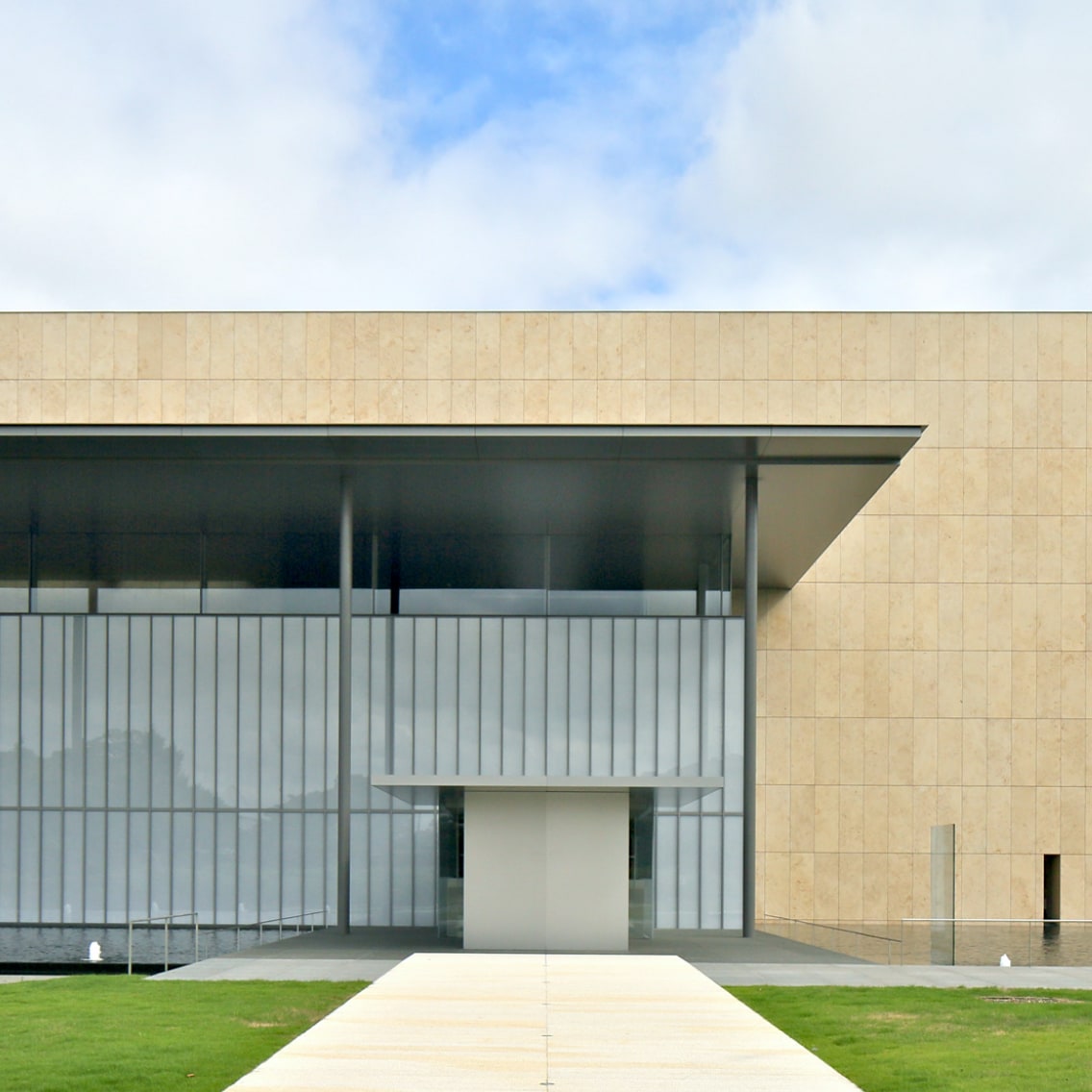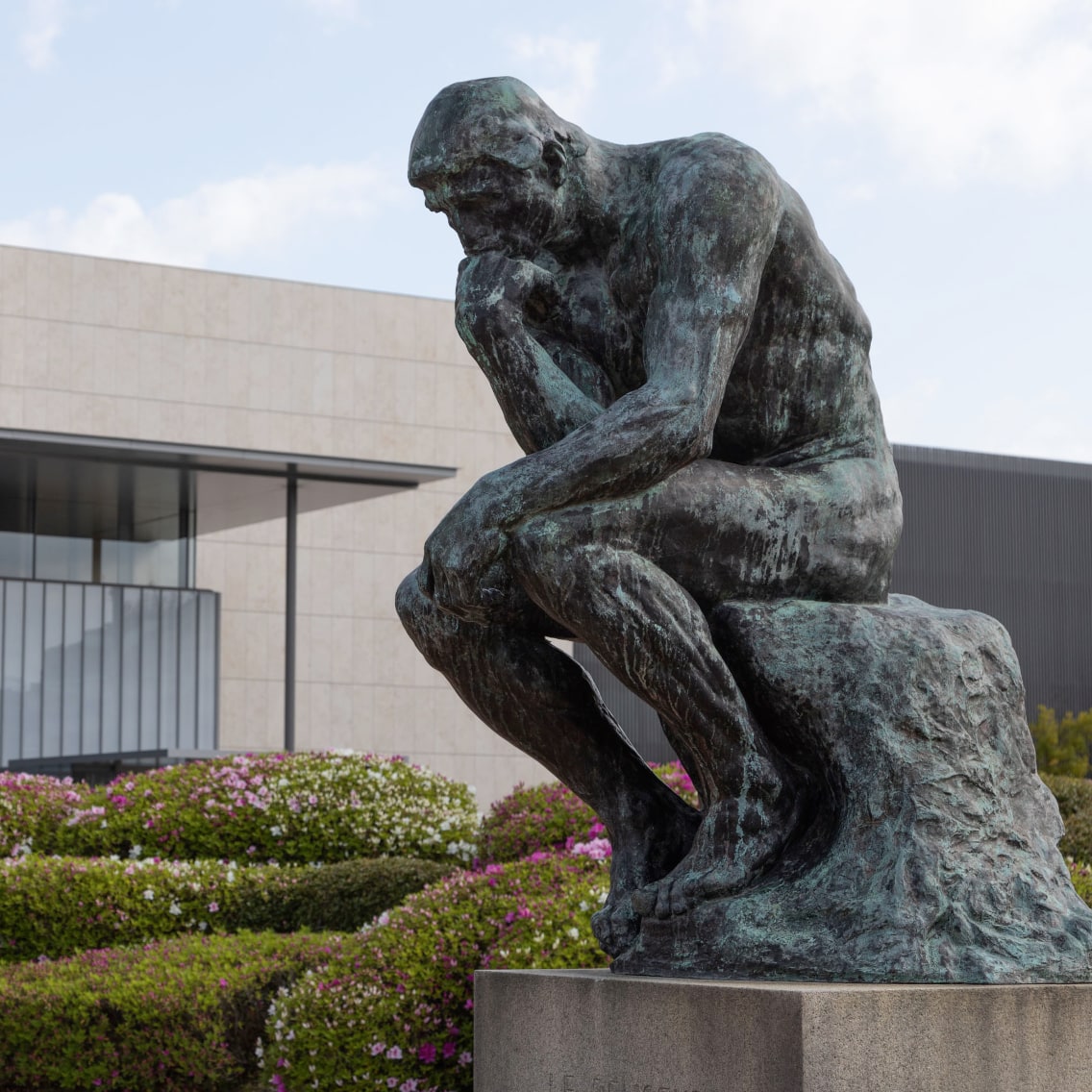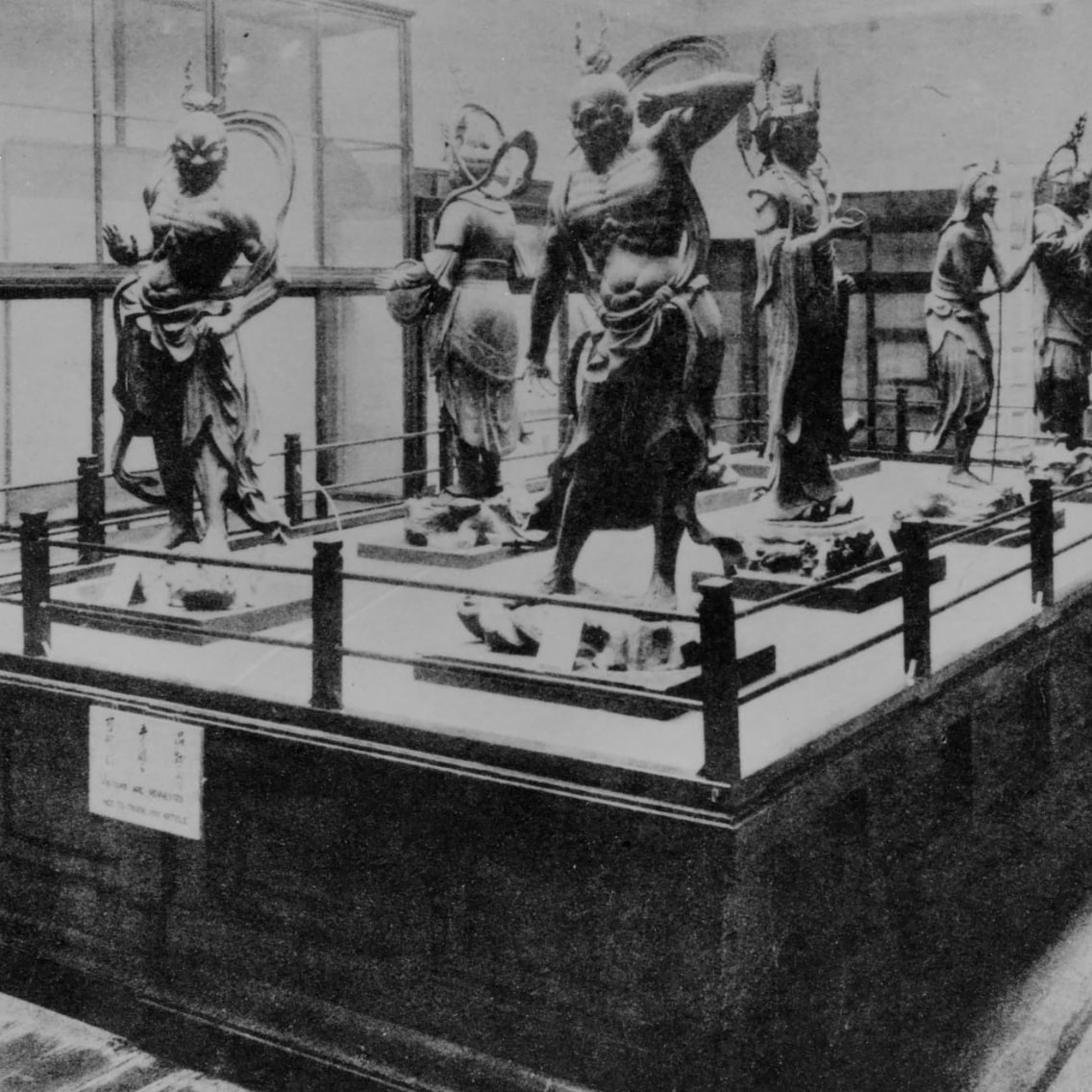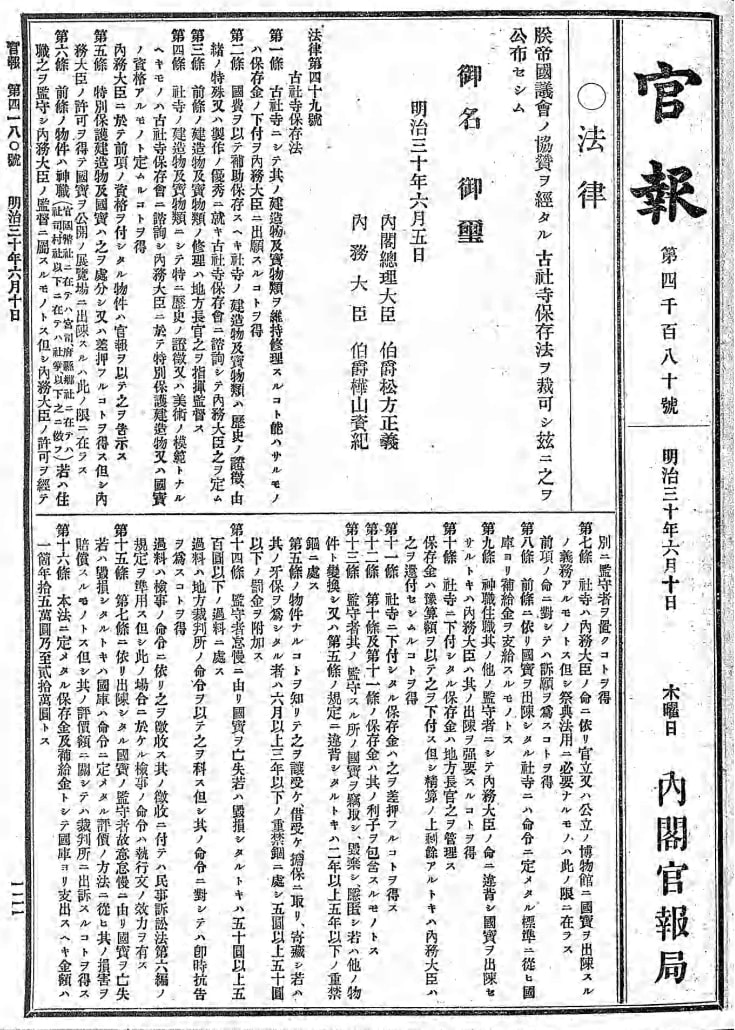
"Ancient Temples and Shrines Preservation Law," Kanpō (Official Gazette) 4180, Meiji 30 (1897)
Image reproduced from the National Diet Library website.
The Origin of the National Treasures System
The Ancient Temples and Shrines Preservation Law
Until the Meiji period (1868-1912), temples and shrines were sites of an amalgamated worship of Shinto and Buddhist deities. In 1868, however, the new Meiji government promulgated a series of orders separating Shinto and Buddhism in hopes of promoting a new image of the nation with the emperor at its center and Shinto as its state religion. Shrines were forced to get rid of objects clearly associated with Buddhism, such as painted and sculptural icons and temple bells. This triggered the "expulsion of Buddhism" (haibutsu kishaku), a movement that resulted in the devastating loss of Buddhist cultural assets throughout the country. Traditional cultural practices were further criticized and rejected under the popular slogan of "civilization and enlightenment" (bunmei kaika). Furthermore, in 1871, additional decrees led to the confiscation of lands owned by shrines and temples. The economic impact was so severe that many religious institutions resorted to abandoning or selling off their treasures. This was how the loss and dissipation of cultural properties unfolded in the modern era.
It was under such circumstances that the Japanese government enacted the Ancient Temples and Shrines Preservation Law on June 5, 1897, which initiated the National Treasures system. This law stipulated that "objects of historical significance and exemplary works of art" should be designated "National Treasures," and a new budget system was established for their conservation and restoration. The Kyoto National Museum opened under the name "Imperial Museum of Kyoto" on May 1, 1897, only one month before this law went into effect.
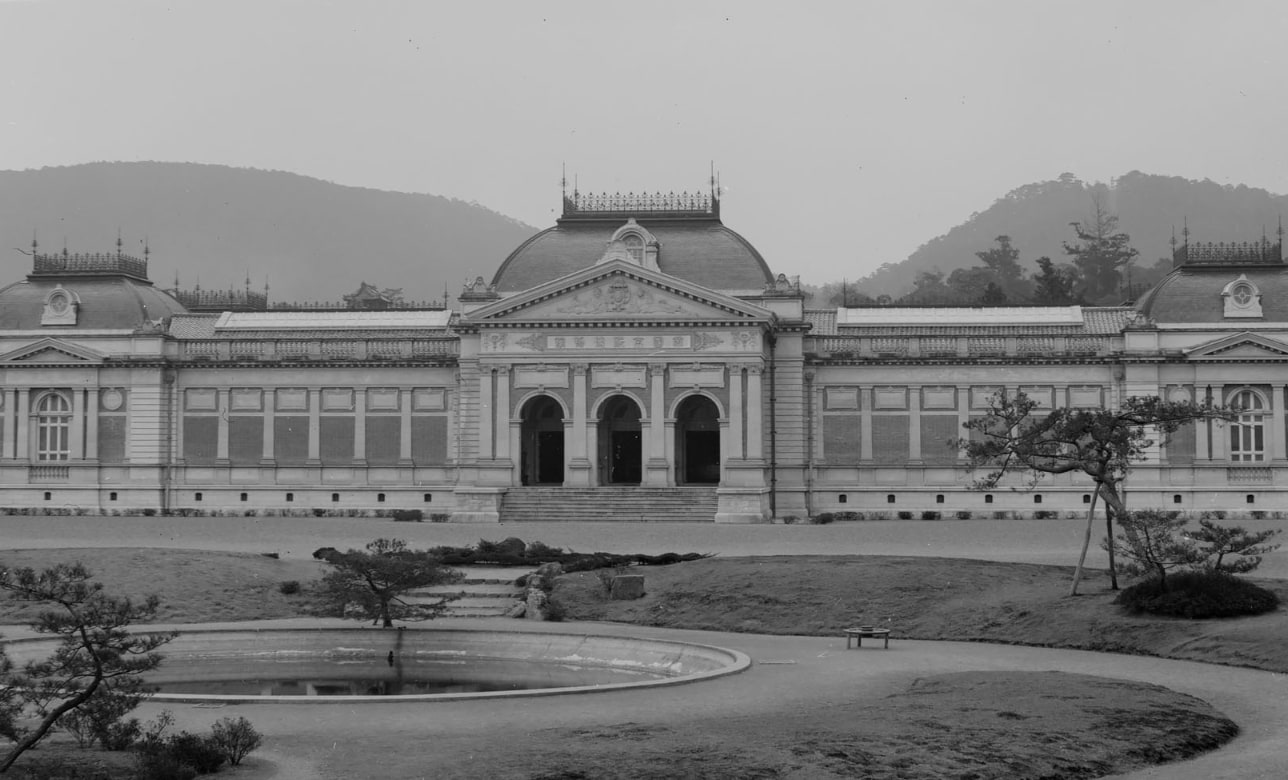
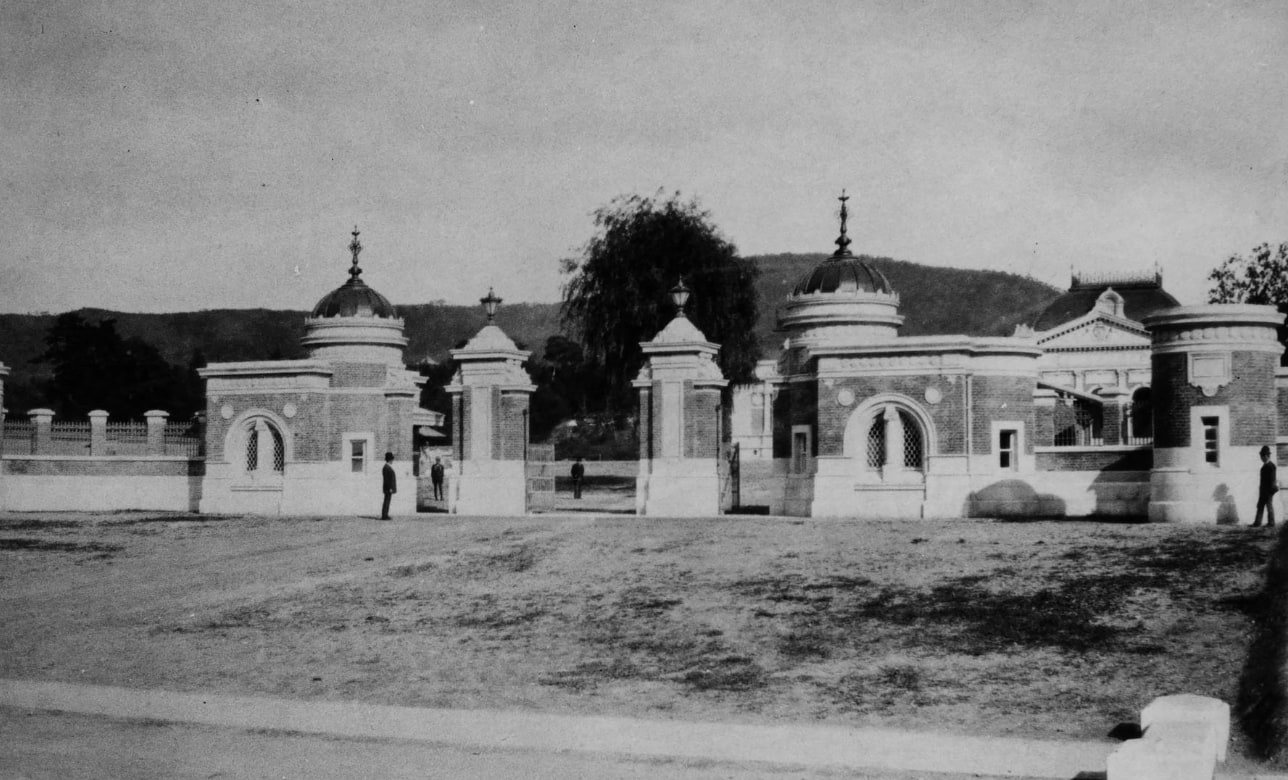
Above: The newly constructed Main Hall
Below: The newly constructed Main Gate
The Opening of the Kyoto National Museum
In 1871, the Kyoto Exposition (Kyoto Hakurankai), the first event of its kind in Japan, was held in the Shoin of Nishi Hongan-ji Temple. After 1873, this event was moved to a location inside the Imperial Palace gardens, where a permanent facility was established specifically for this purpose. This prompted the government of Kyoto prefecture in 1875 to begin plans for opening a museum, but the project was soon abandoned. Discussions for what was reframed as an "imperial museum" resumed in 1889, and eventually the Imperial Museum of Kyoto opened on May 1, 1897. This was renamed the Imperial Household Museum of Kyoto in 1900 and would later become the Kyoto National Museum that we know today.
One of the guiding principles of the museum was the protection of cultural properties belonging to temples and shrines, many of which had lost their economic foundations after the Meiji Restoration (1868). The year 1897 also marked the enactment of the Ancient Temples and Shrines Preservation Law and the beginning of the National Treasures system, representing a groundbreaking new era in the government-sponsored protection of cultural properties.
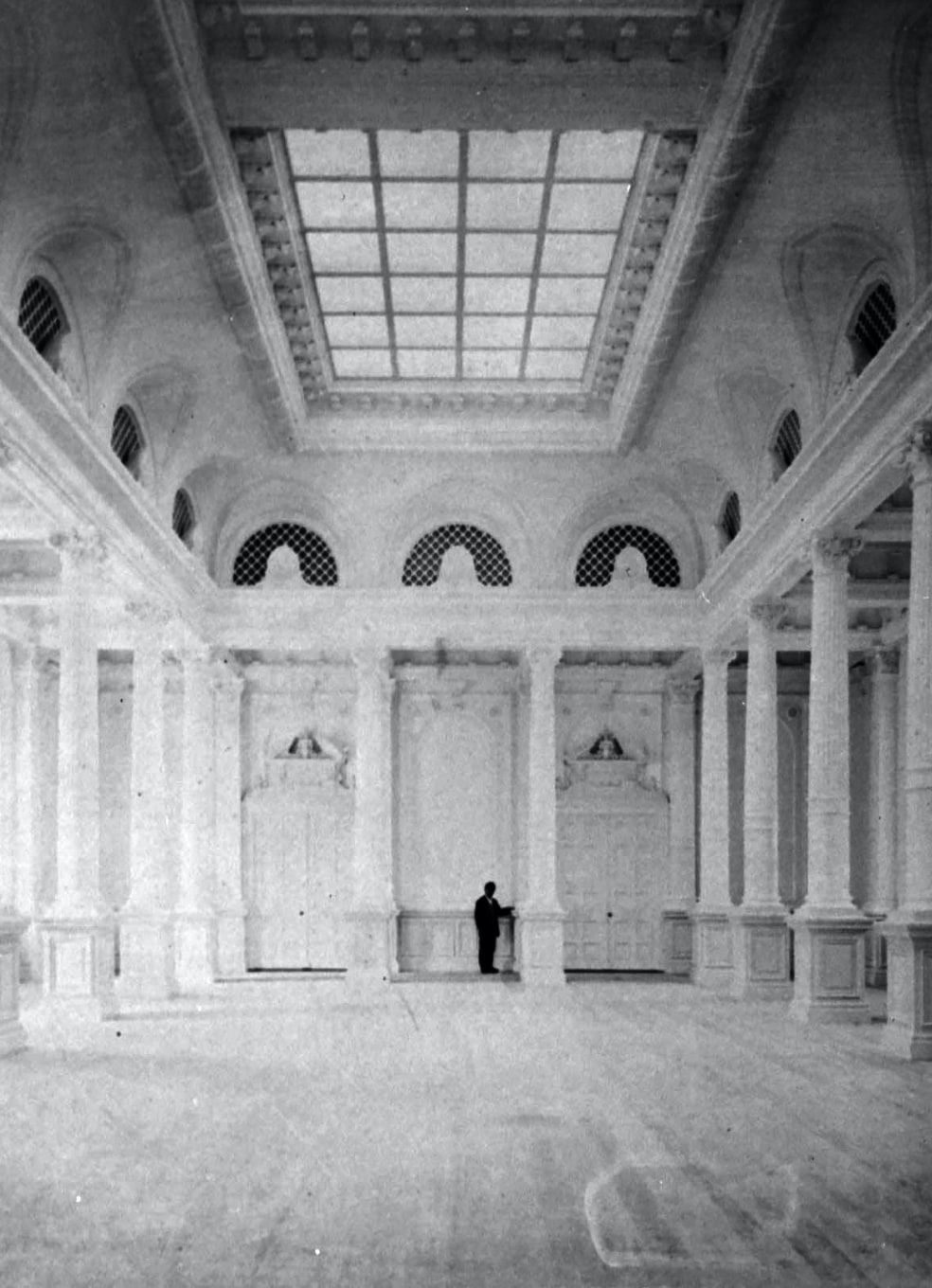
The central gallery of the newly constructed Main Hall
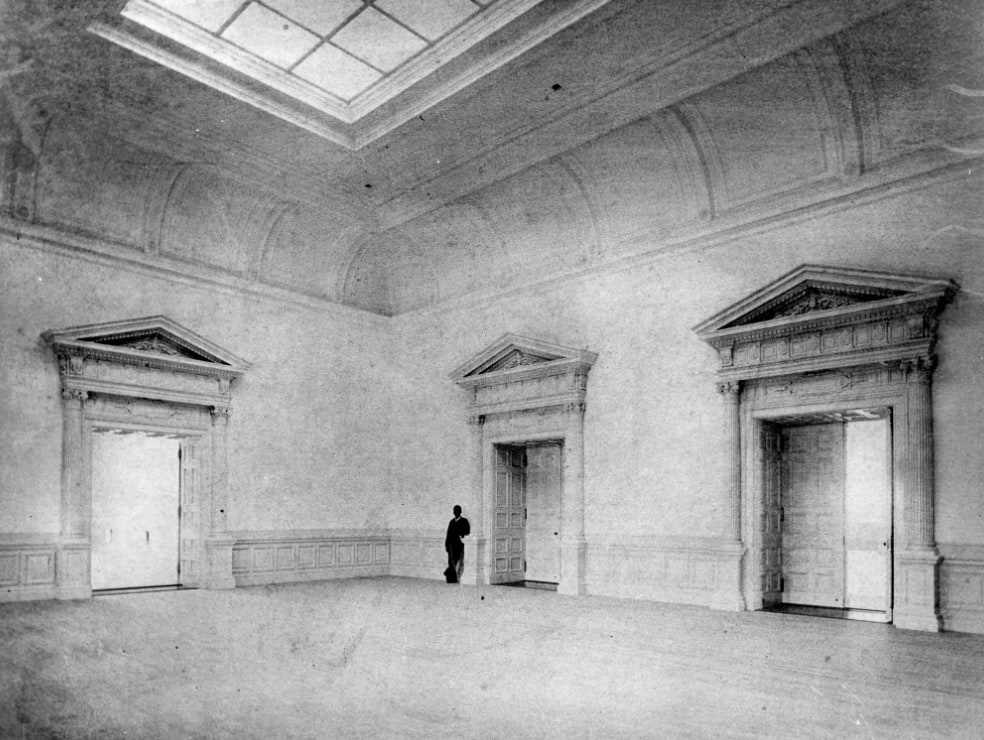
The foyer of the newly constructed Main Hall
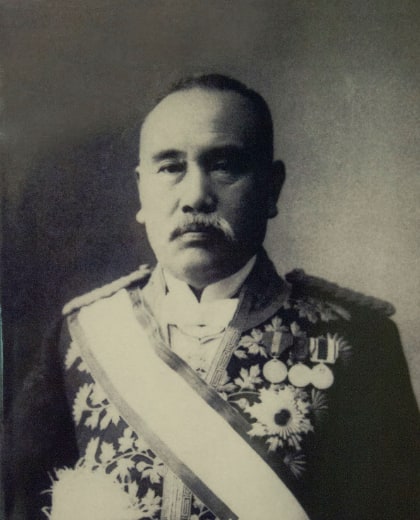
Portrait of Katayama Tōkuma (1854-1917), architect of the Main Hall
Column 01
From Kyoto Exposition to
Kyoto National Museum
The first ever World Exposition held in London in 1851 led to a boom in international expositions held mainly in Europe. The first event in Japan defined as an "exposition" (hakurankai) was the Kyoto Exposition (Kyoto Hakurankai) held in 1871. From 1873 this event was held annually in a corner of the Imperial Palace gardens, where an exhibition facility was constructed.
In 1875, the government of Kyoto prefecture announced plans to create a Kyoto Museum (Kyoto Hakubutsukan), and a wide range of cultural properties from Kyoto were loaned for exhibit. The project was spearheaded by the scientist Akashi Hiroakira (1839-1910), director of the Kyoto Exposition. The new museum was set to be located in the same area of the Imperial Gardens that had hosted the exposition. The original vision was to establish it as an encyclopedic museum encompassing various fields, including the natural sciences.
This plan was eventually suspended, however, and it was not until 1889 that a revised proposal was launched, leading to the eventual construction of the Imperial Museum of Kyoto. Thus, after a series of fits and starts, the Kyoto Exposition paved the way for a museum for the people of the old capital.
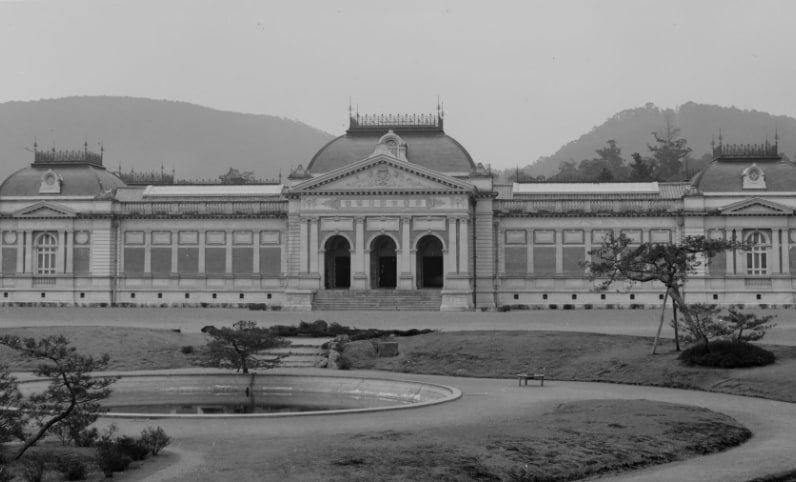
The newly constructed Main Hall
The Imperial Gift Museum of Kyoto
From an Imperial Household Museum to a Municipal Museum
The new Imperial Museum of Kyoto opened in 1897 with a collection containing treasures owned by or associated with the imperial household in addition to a variety of fine and decorative art works that had been passed down within temples and shrines. The Imperial Household Ministry presented the museum to the city of Kyoto in 1924 in commemoration of the wedding of the crown prince (the future Emperor Shōwa) and as part of an administrative reform. The museum's current focus on visitor experience was developed during this major transformation from being an imperial museum to being a people's museum.
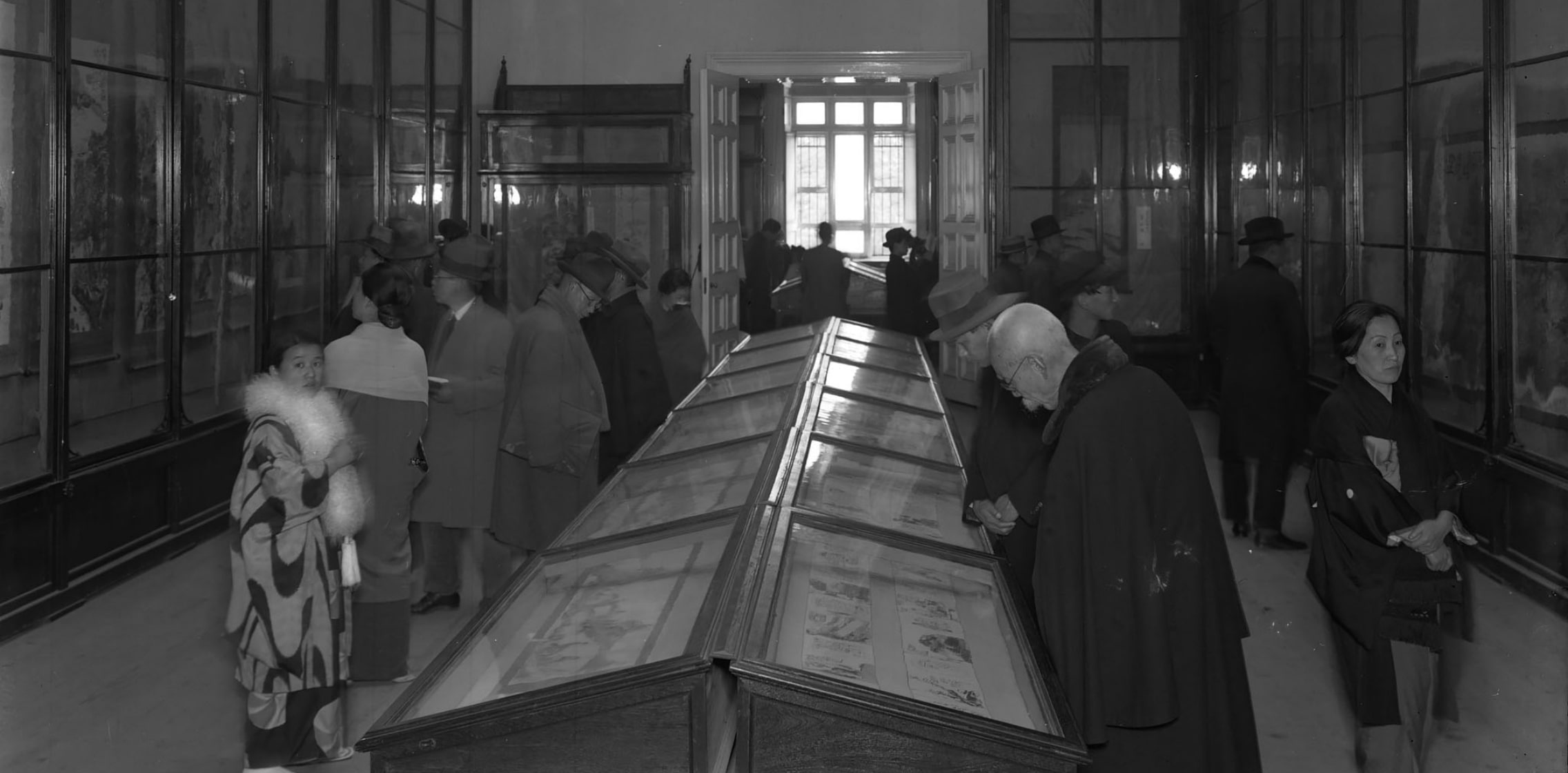
Museum visitors in the Main Hall
This photo is a relic from the days when people made a habit of dressing up for outings to the museum. In the early years, gallery exhibits incorporated natural light that flowed in from the windows and skylights. Today, the exhibition spaces use artificial light to protect the works from damaging ultraviolet rays.
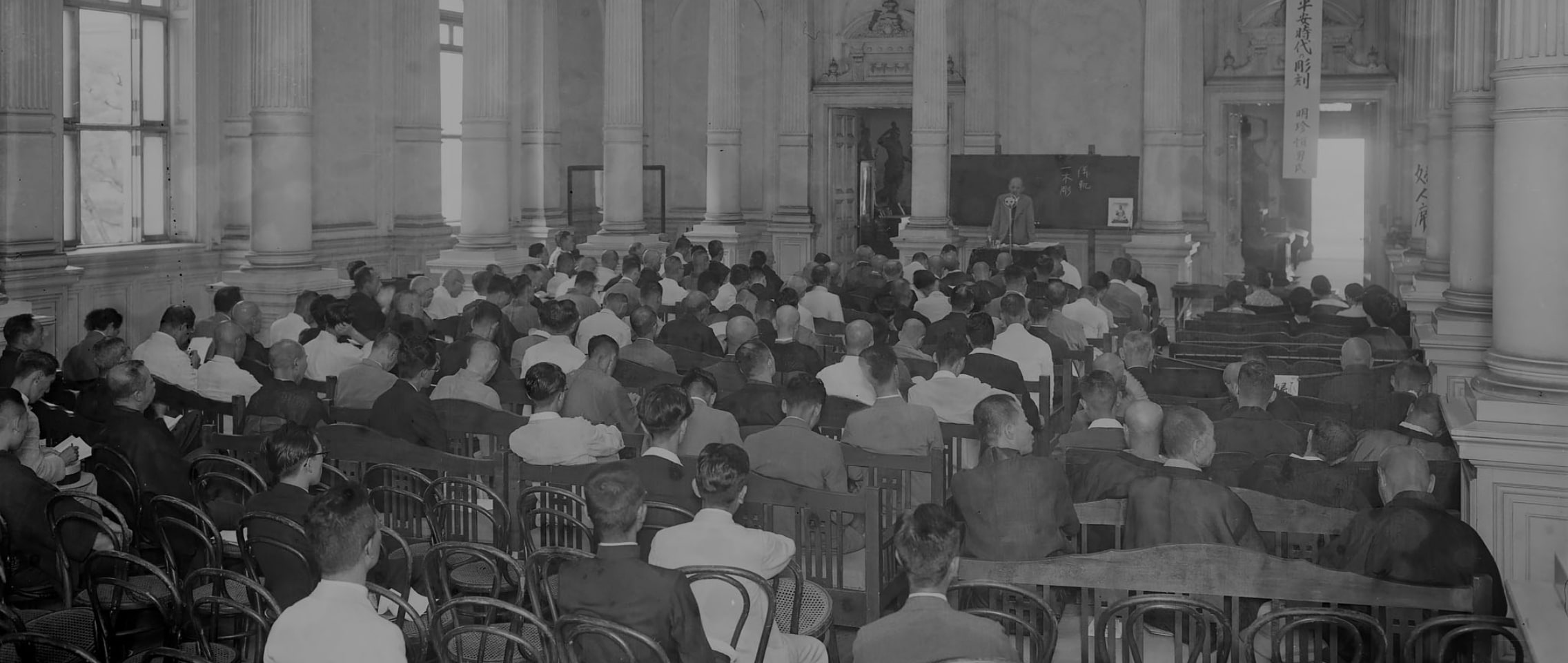
Early Summer Seminars and Exhibition Lectures (precursors to today's Saturday Lecture Series)
The museum's lecture series began in 1924. The photo shows a Summer Seminar from 1936 in the central gallery of the Main Hall (today's Meiji Kotokan). The lecture, "Technical Aspects of Heian Period Sculpture," was given by the sculptor Myōchin Tsuneo (1882-1940) to an audience that included Buddhist priests. Beginning in 1938, due to the Second Sino-Japanese War, the Summer Seminars were temporarily suspended and remained so for the next eight years.
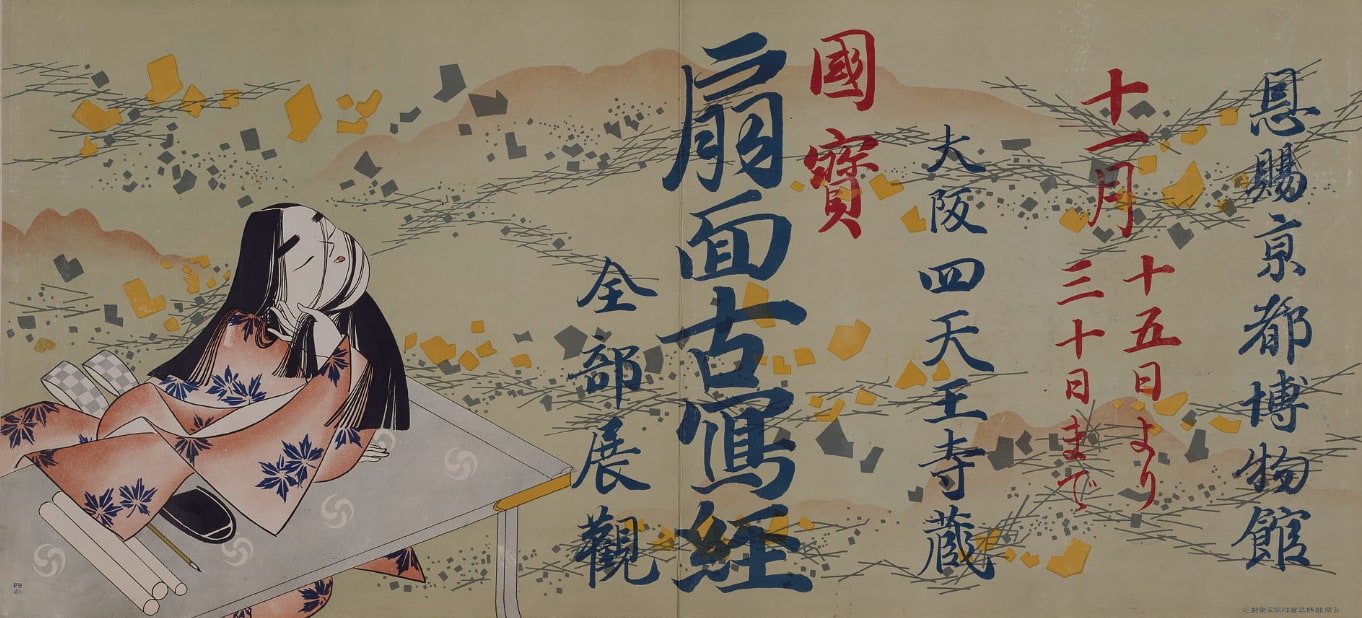
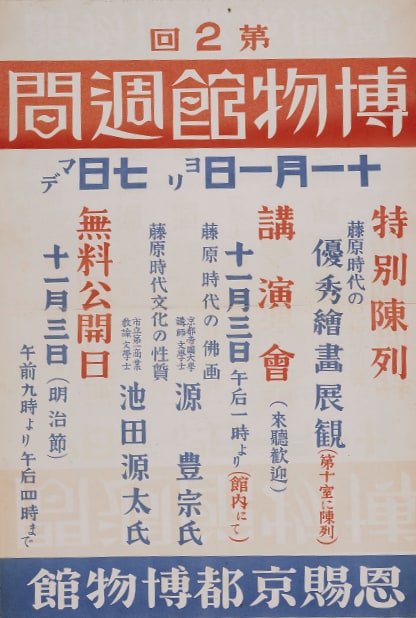
An early exhibition poster
Upgrading Museum Facilities
Resolution of Initial Issues
Despite chronic underfunding, the museum improved its facilities and built up its collections over time. For example, a new museum storage area was completed in 1930. In 1934, an "exhibition sales office" (nowadays called a museum shop), a ticket office, and a place to leave shoes were constructed in small pavilions located on either sides of the Main Hall's front entrance.
In 1929, in response to population increase, the city of Kyoto revised its districting from a two-ward system to a five-ward system. This change resulted in a portion of the museum's grounds being relinquished in order to build the newly established Higashiyama Ward Office. This land was reacquired by the museum in 2002.
Pavilions flanking the front entrance of the Main Hall: the museum shop in the mid-twentieth century
Even today, faint traces remain of the two pavilions built in 1934 and removed in 1966. These small wings were used for the museum shop (on the north side; left) and the exhibition ticket office (on the south side; right).
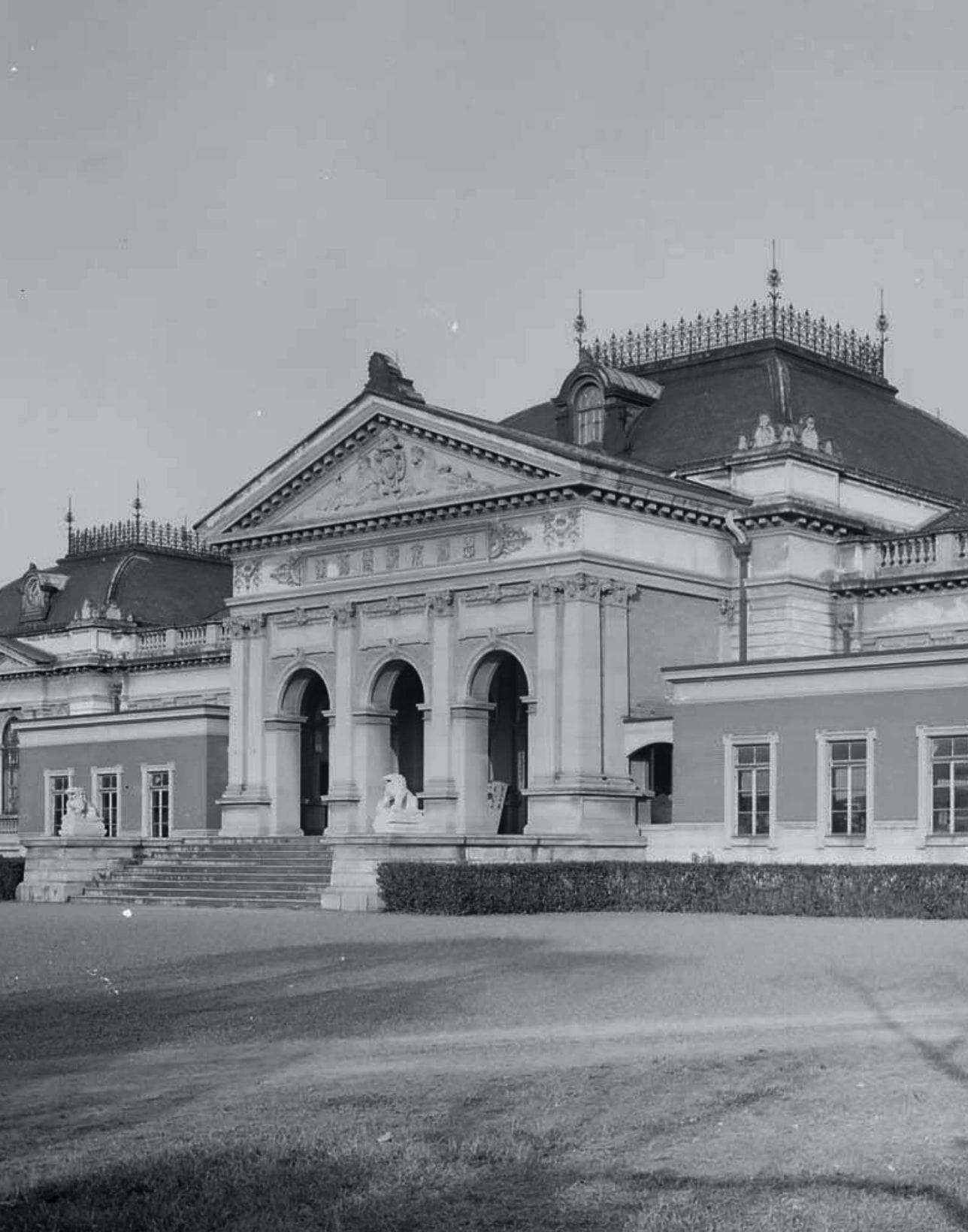
Pavilions flanking the front entrance of the Main Hall: the museum shop in the mid-twentieth century
Even today, faint traces remain of the two pavilions built in 1934 and removed in 1966. These small wings were used for the museum shop (on the north side; left) and the exhibition ticket office (on the south side; right).
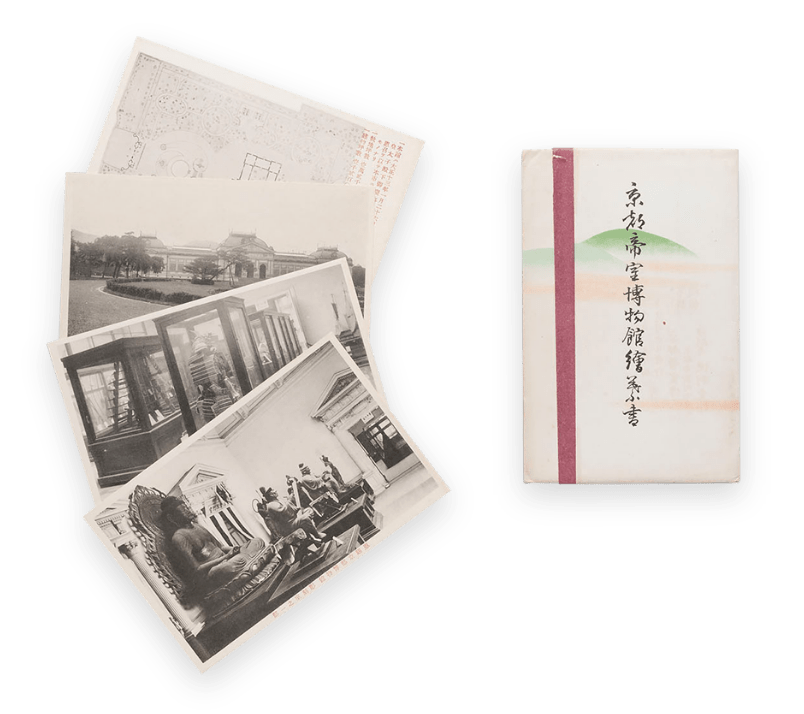
Set of early postcards
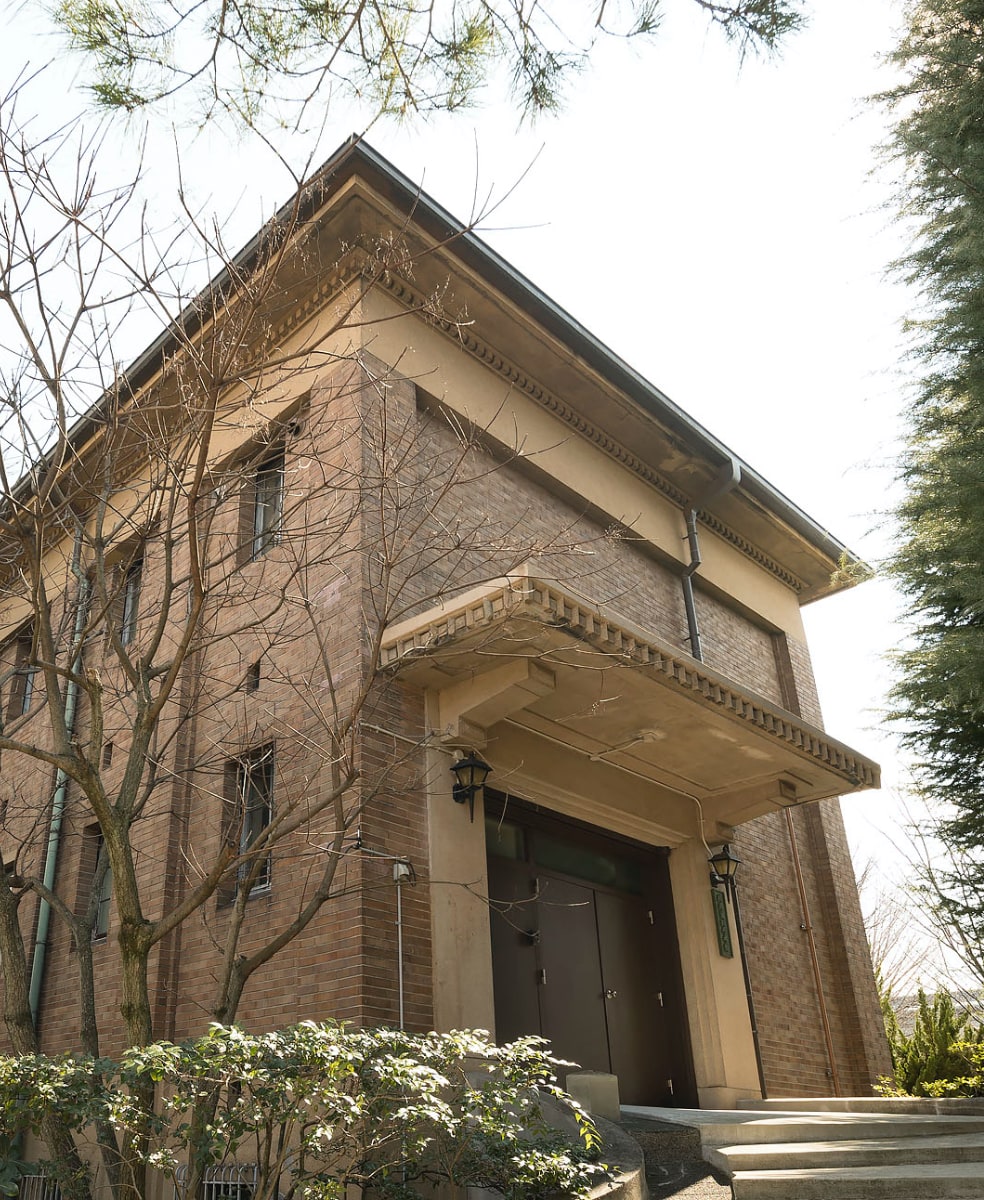
Former museum storage (now known as the Technical Archives Hall)
During the Imperial Household Museum years, the only art storage facility was an earthen-walled storehouse. The construction of a much-needed storage facility was finally completed in 1930. This building, constructed on a hill to control humidity, was utilized until 1966, when the New Exhibition Hall was built.
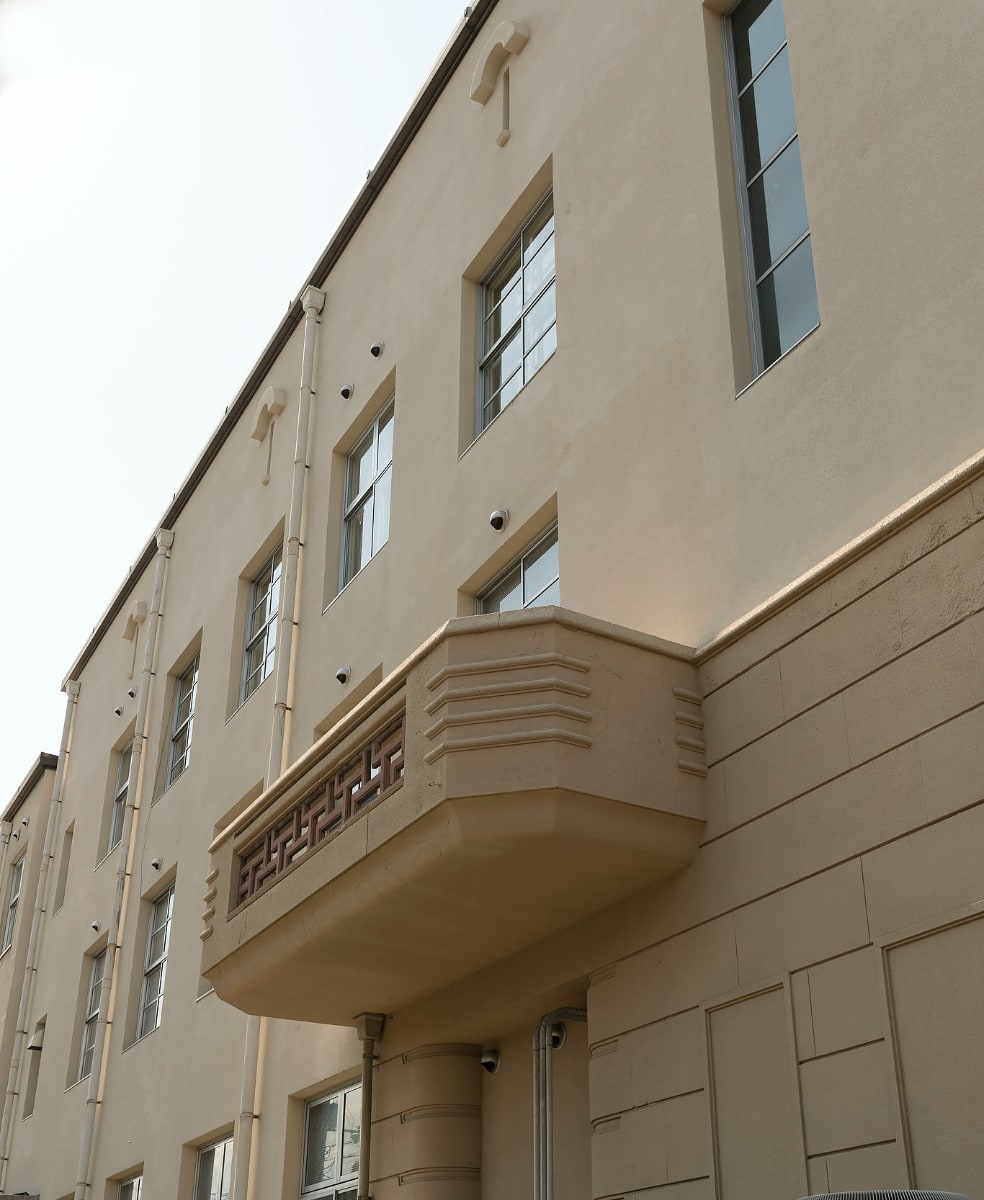
The former Higashiyama Ward Office
This former ward office is an important example of modern Art Deco architecture in Kyoto. It was purchased back from Kyoto City in 2002 and is now part of the museum's facilities.
Column 02
The History of the Museum Site
The Kyoto National Museum stands on a site formerly occupied by part of the Hōjūji-dono residence of Retired Emperor Go-Shirakawa (1127-1192). Rengeō-in Temple and its main hall Sanjūsangen-dō were also a part of this sprawling residence. The temple's Great South Gate is currently situated directly south of the museum's South Gate and the new Heisei Chishinkan Wing's entrance.
In the sixteenth century, the site was part of Hōkō-ji Temple, home to a Great Buddha Hall built by warlord Toyotomi Hideyoshi (1537-1598) during the Momoyama period (1573-1615). The historical remains of Hōkō-ji's walled outer corridor and South Gate, which were built by Hideyoshi's son Toyotomi Hideyori (1593-1615), are also located on the museum grounds and are designated as an Historic Site. The locations of their foundation stones have been incorporated as design elements in the reflecting pools in front of the new wing and inside the lobby. The Heisei Chishinkan Wing was designed with great consideration toward this area's rich history.
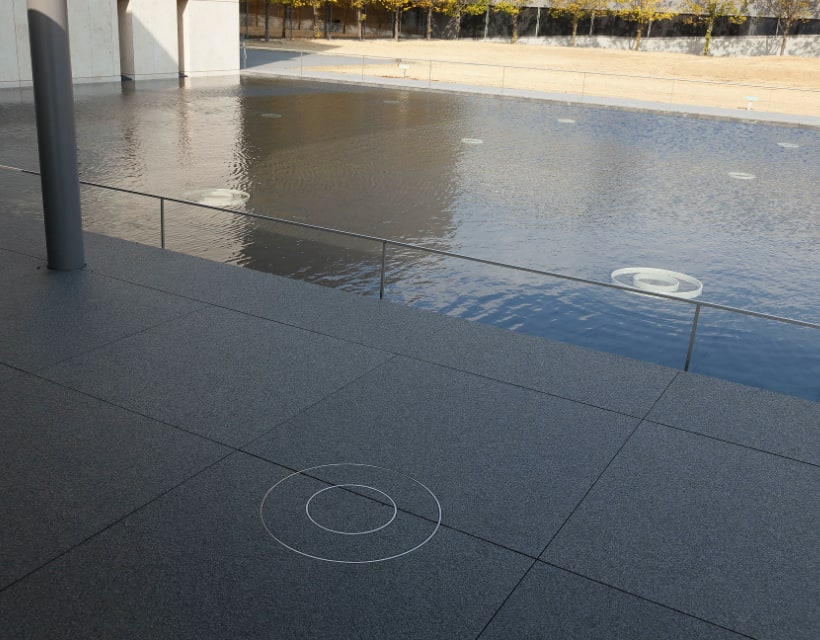
Rings indicate the locations of excavated foundation stones from Hōkō-ji Temple.
Kyoto National Museum
A Return to Government Administration
Having overcome the conscription of museum staff and the dispersal of artworks during the war years, the museum's administration changed hands from Kyoto City to the National Commission for the Protection of Cultural Properties (the precursor to today's Agency for Cultural Affairs). It was renamed the Kyoto National Museum in 1952. At the time, the Main Hall was in extremely poor repair and the grounds were in ruins. The museum was in dire need of a modern storage facility and an administrative office building.
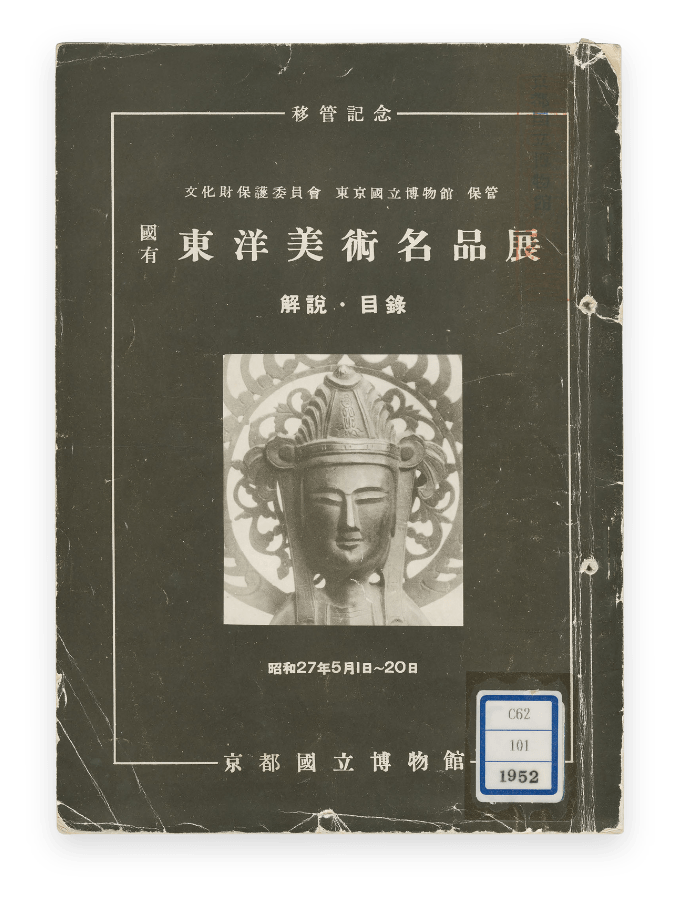
Nationally Owned Masterworks of East Asian Art, commemorating the administrative transfer from Kyoto City to the Japanese government
The first exhibition held after the administrative transfer to the national government was entitled Nationally Owned Masterworks of East Asian Art. Note how the words "Nationally Owned" are emphasized prominently on the cover.
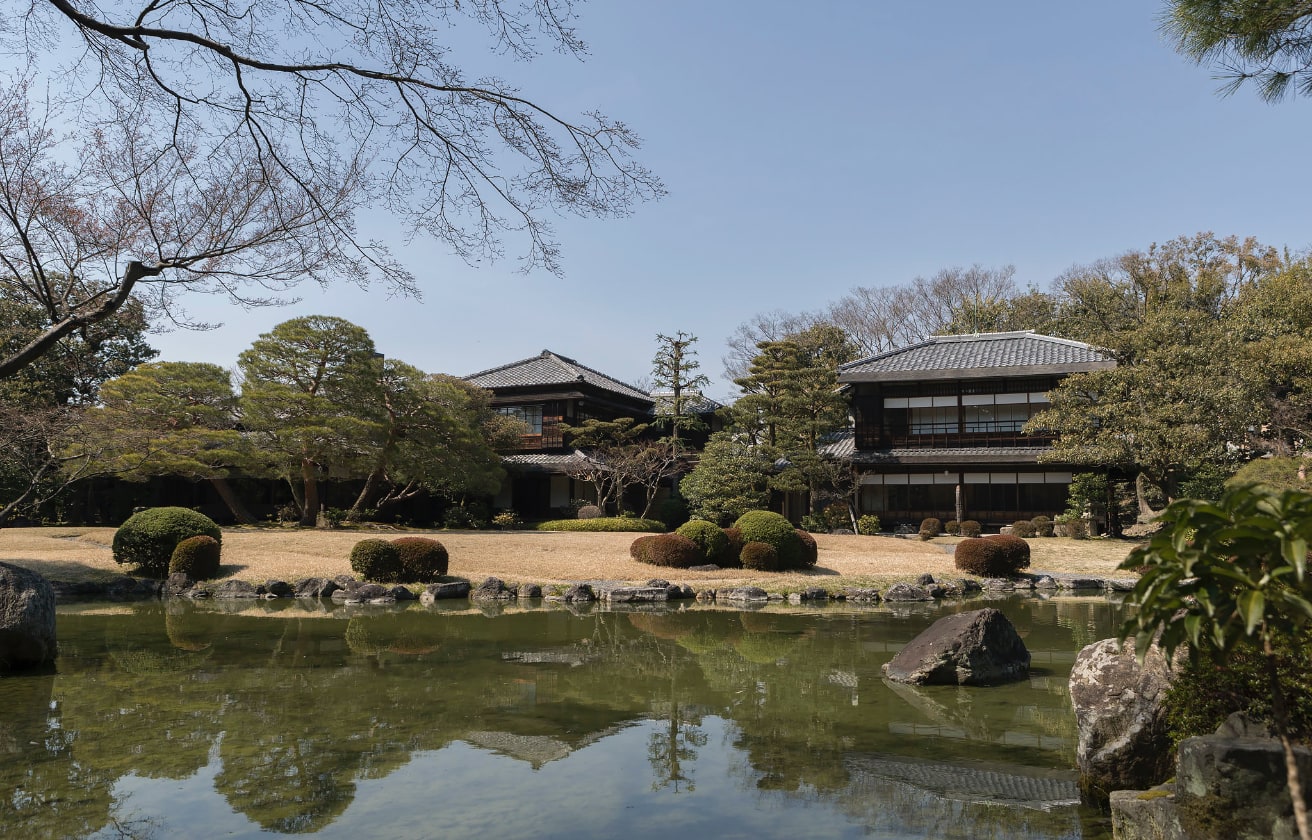
First meeting of the Seifūkai at the eponymous Seifūsō ("Pure Wind Villa," now part of Kyoto University), the former residence of Saionji Kinmochi (1849-1940)
The Seifūkai ("Pure Wind Society"), a patrons association founded to support the museum, was inaugurated in 1953, with members coming primarily from Kyoto's financial sector. Thereafter, the Seifūkai has provided funding to the museum and has organized guided member tours and study visits led by museum staff.
